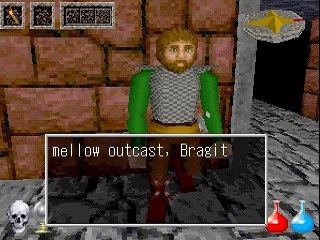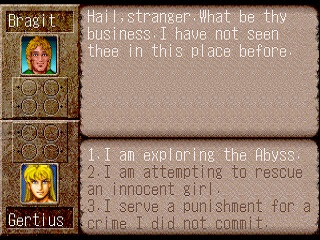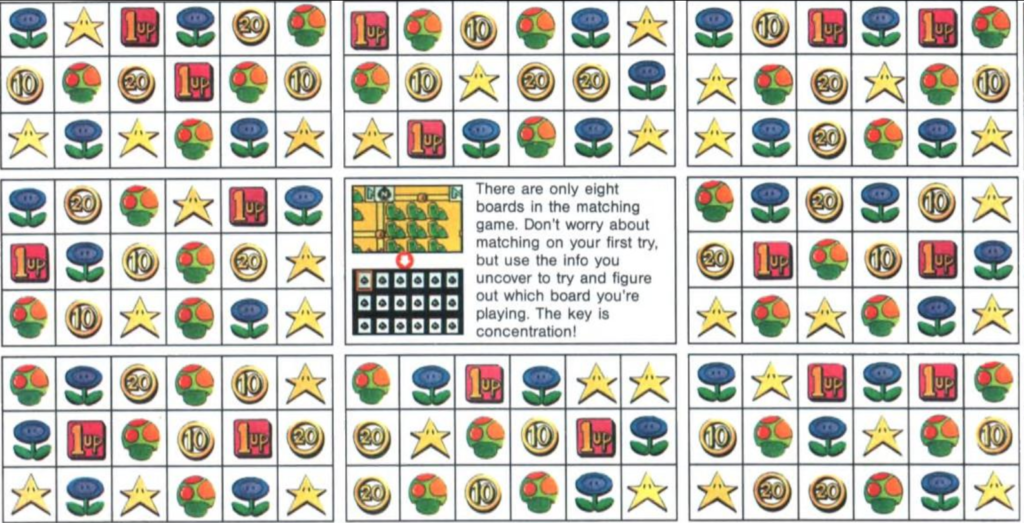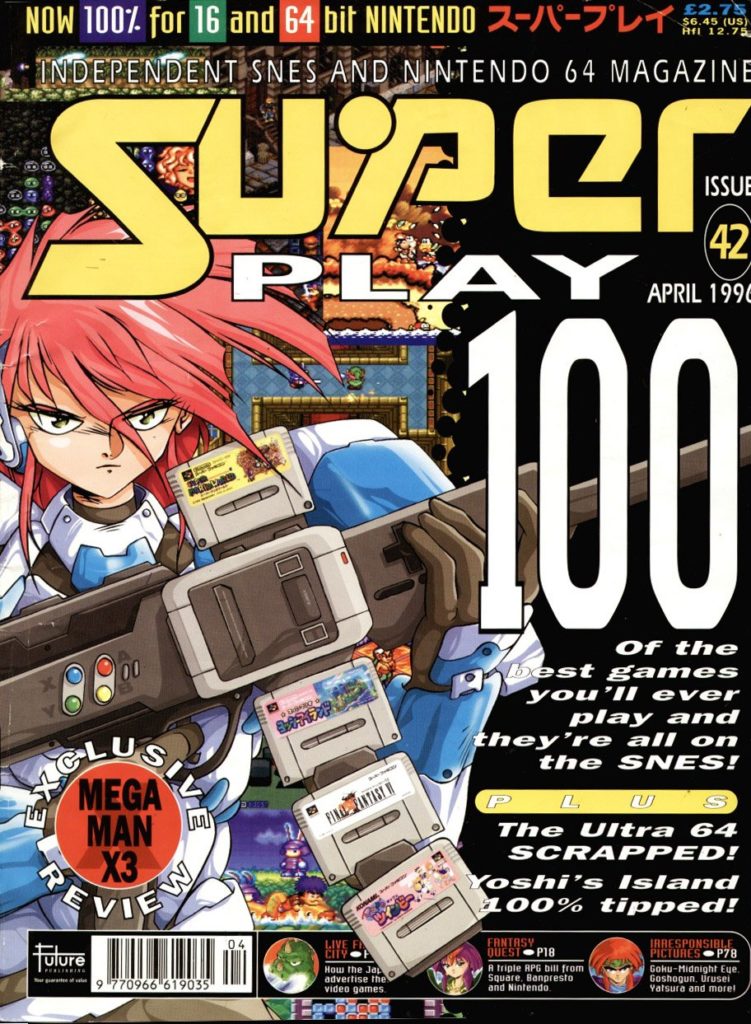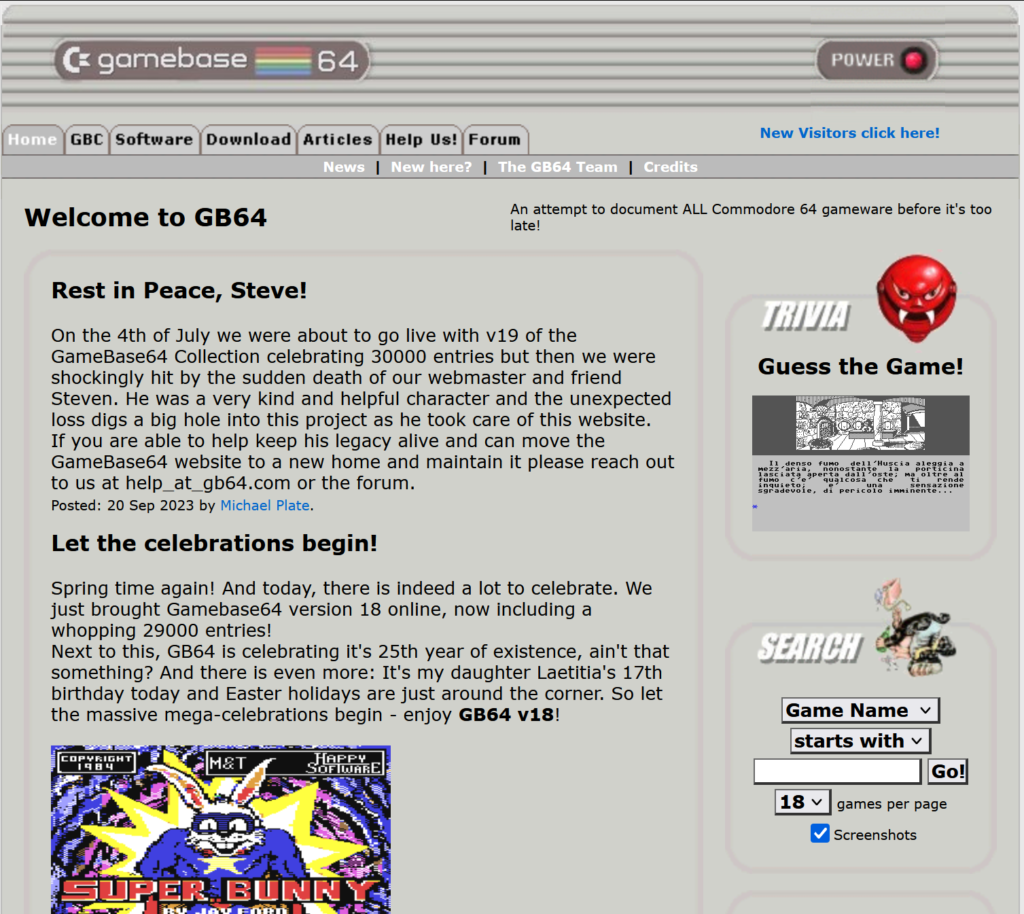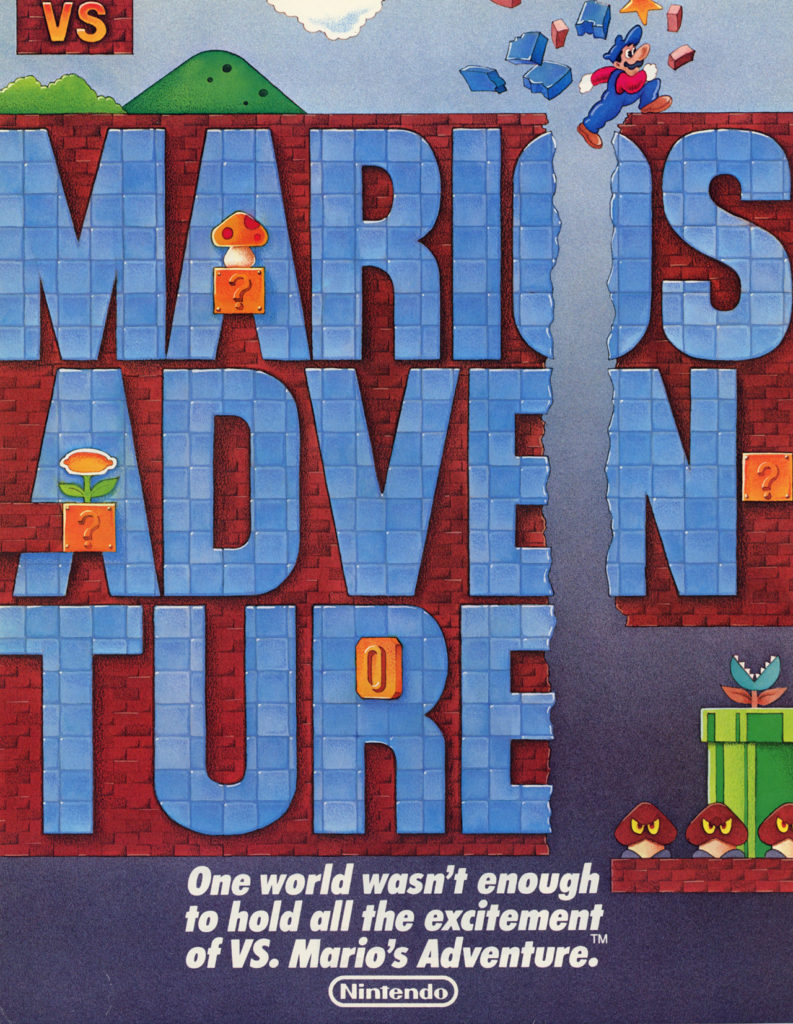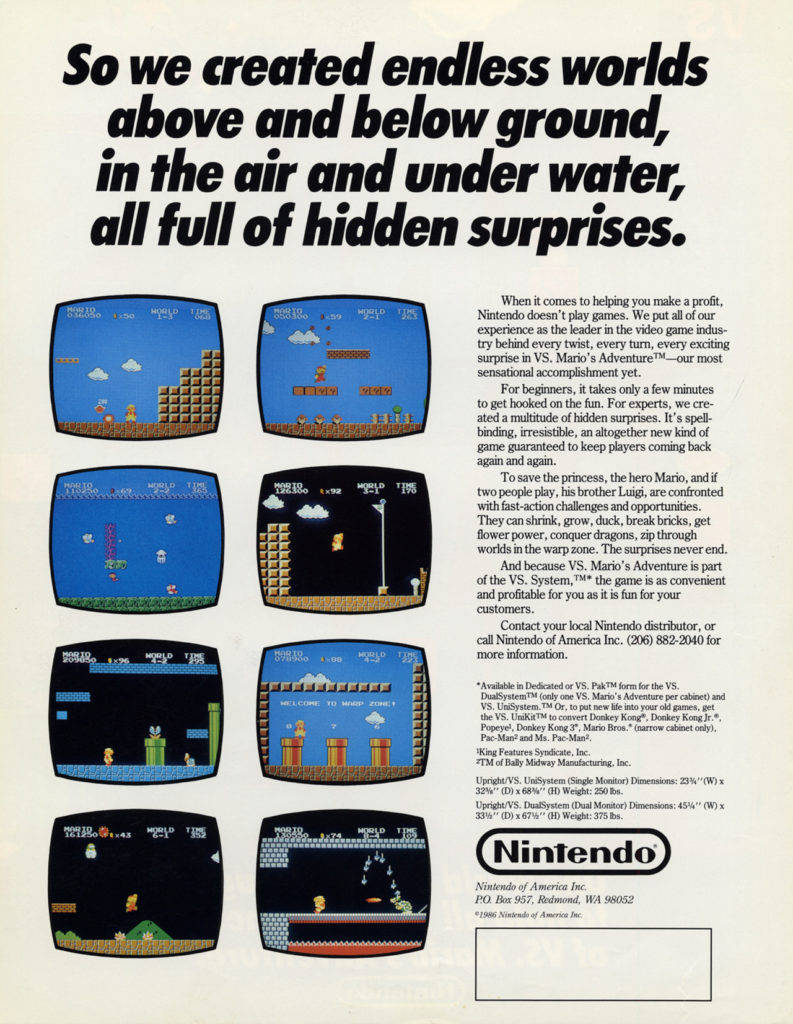This is quite a collection to look through! While it was originally posted in 2021, it was updated with some new reviews just this past Sunday. They’re sorted alphabetically by game. They go at least as far back as NES Dragon Warrior, but some of them are really recent, especially with the addition of games reviewed by WalMart’s free pass-out magazine GameCenter. Their definition of JRPG kind of goes far afield, with some metroidvania-style Castlevanias, two Advance Wars games and a good number of half-related things.
Here are a small selection of included magazine scans….
GamePro’s review of the TurboGrafx port of Cadash, which unlike the Genesis/MegaDrive’s version has all four characters from the arcade game. The review’s written by “The Pizza Boys,” and has slangy writing and goofy little cartoon faces over the review scores, because it’s in a magazine written for teenage boys from 1991. Notice, the whole review is seven paragraphs, with four section headings, and four “PROTIP” inserts that don’t offer useful advice:
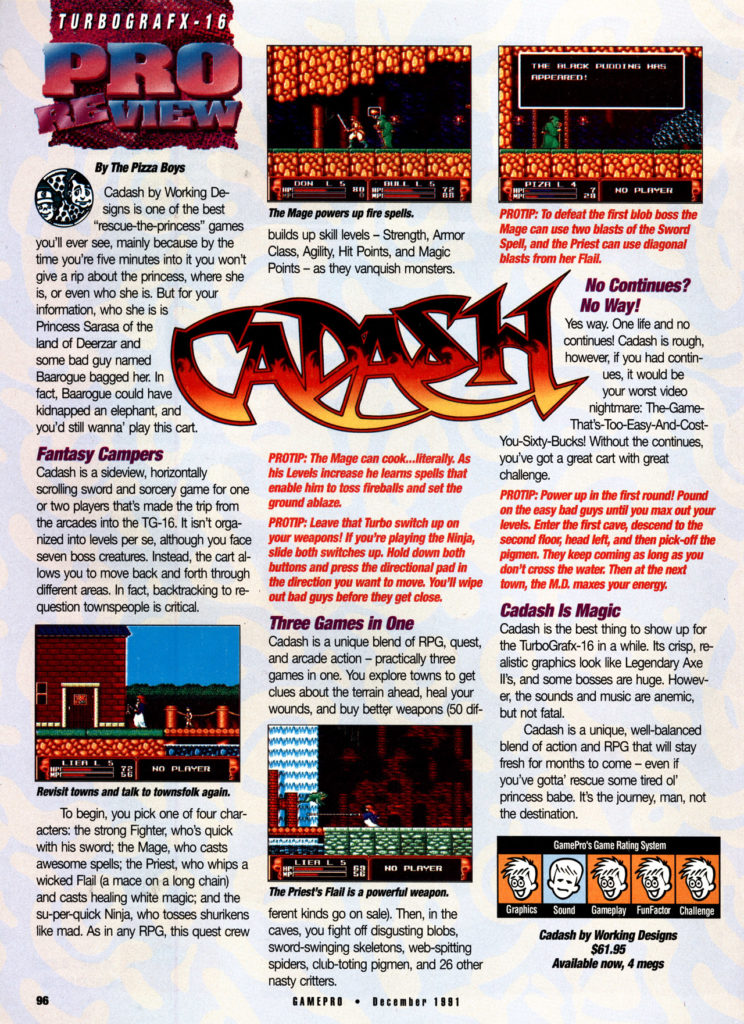
The review of Dragon Warrior from Game Player’s. I love it when magazines from this era publish the address of Nintendo of America. This review doesn’t really tell you much about the game though:
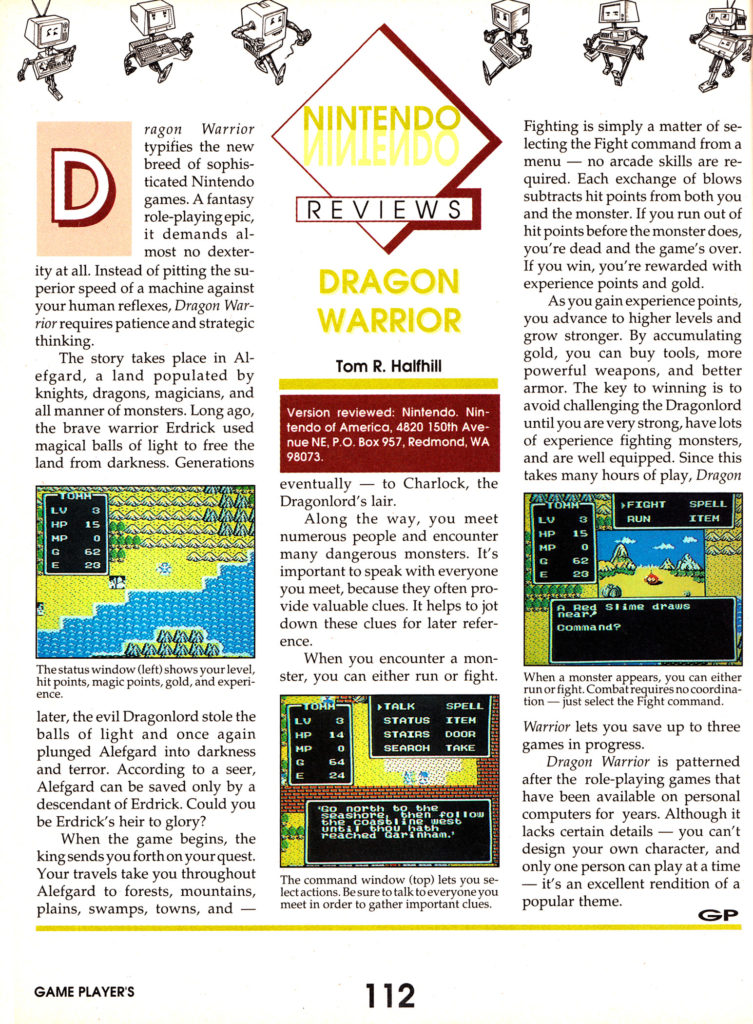
I had forgotten about this phase in Nintendo Power’s history. Check out their dissing the inventory of Earthbound, Nintendo’s own product! (I disagree, BTW, Earthbound is designed around its inventory limits, and they’re an essential part of the game!)
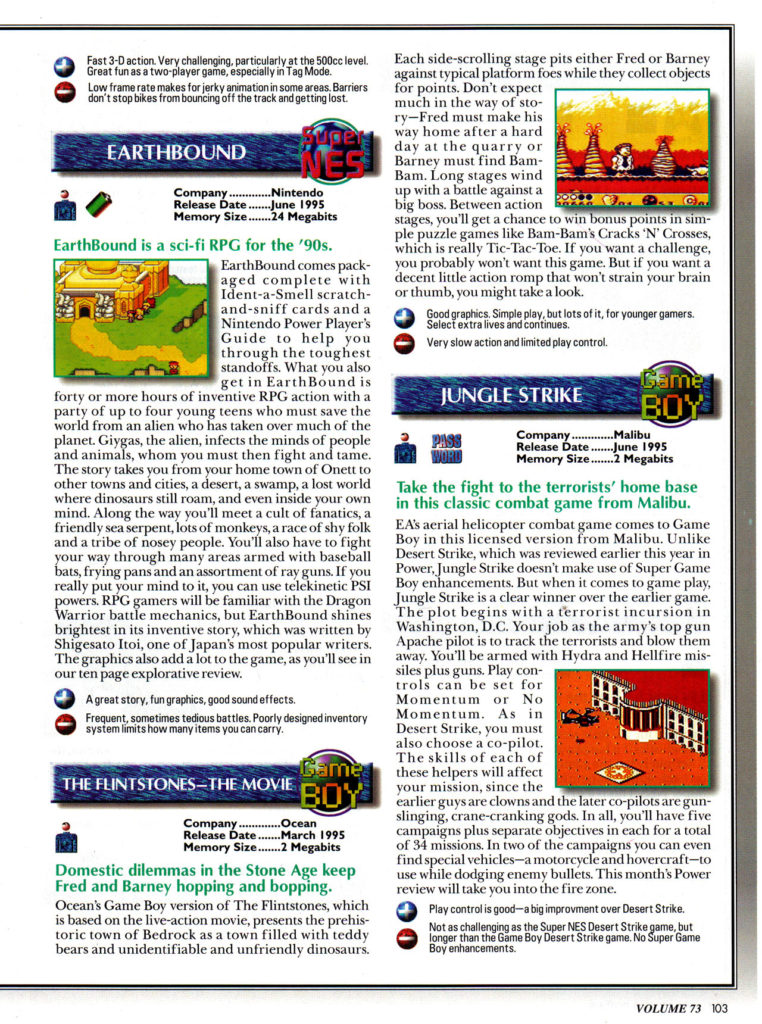
VideoGames & Computer Entertainment has always had a place in my heart, and Clayton Walnum is one of my favorite reviewers. In its heyday it had a no-nonsense approach to their reviews that appealed to me. It was the exact opposite of Electronic Gaming Monthly, a magazine that, honestly, I never much liked because of their loud editorial style and tendency to bloat their magazine up with advertisements:
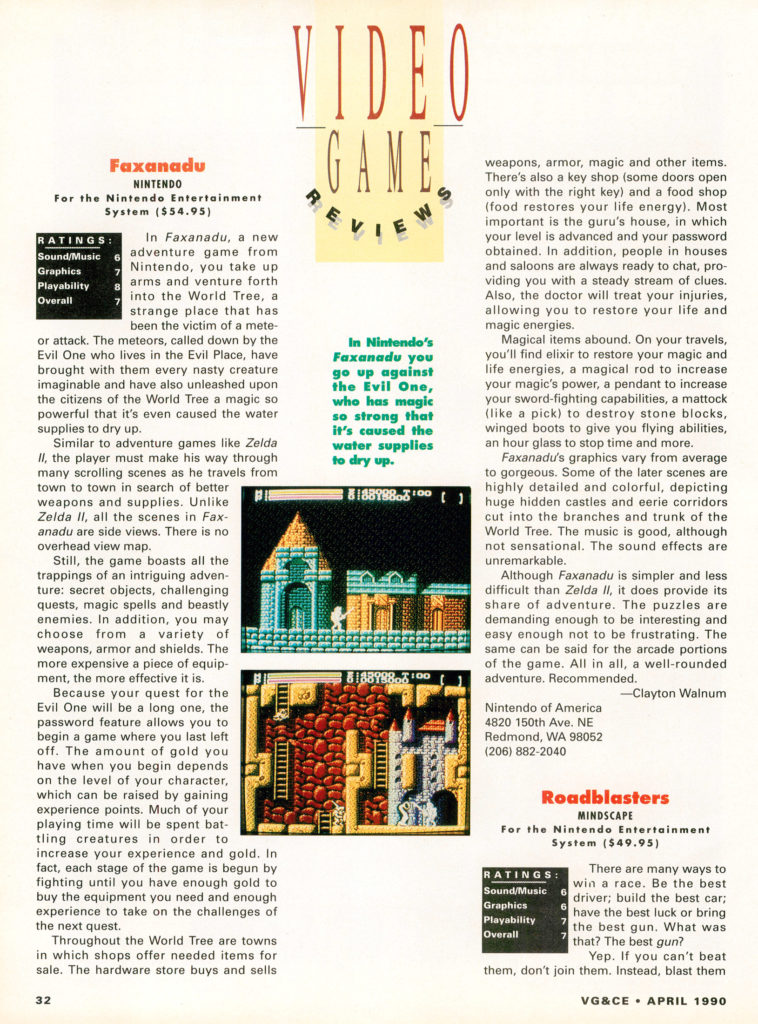
Who doesn’t love Grandia? This review reminds us that we almost didn’t get an English version of it!
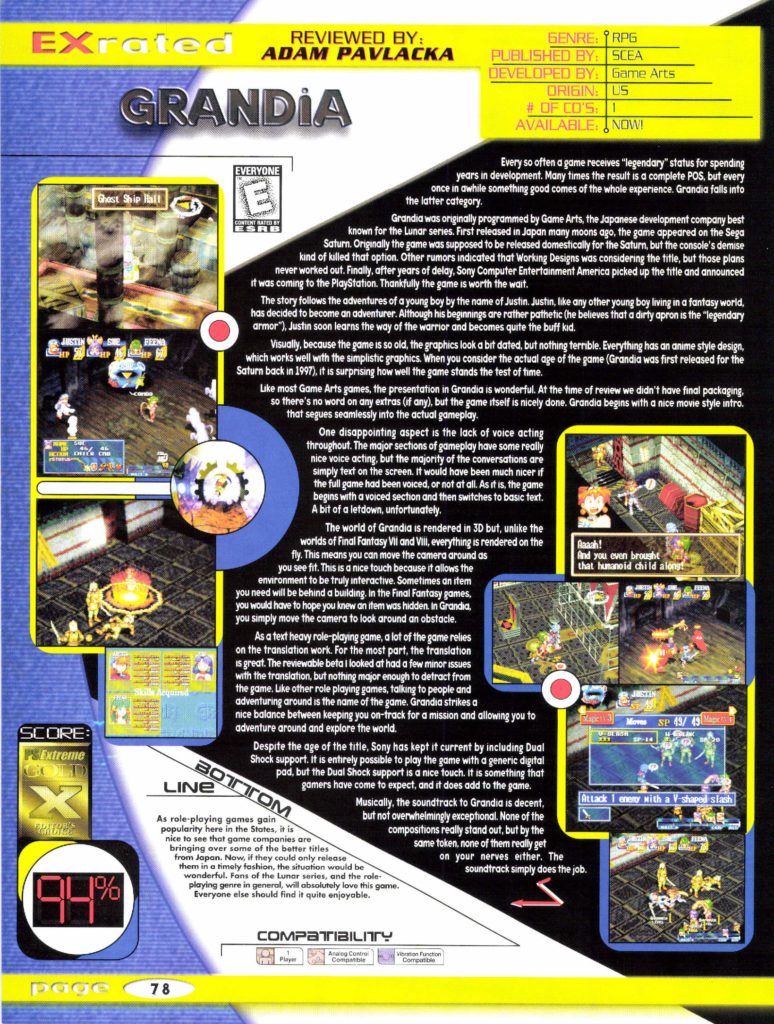
Little King Story is, no lie, one of the most overlooked Wii games of all time:
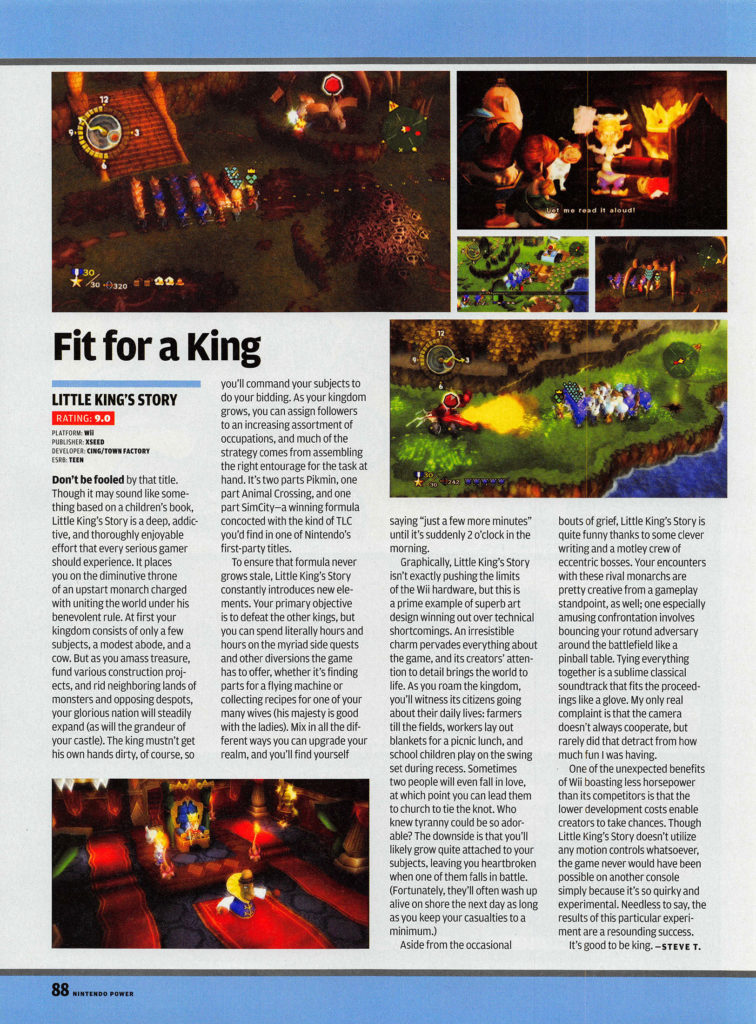
“VideoGames: The Ultimate Video Game Magazine” had a redundant title, but some fun layouts. Here’s their two page review of SNES Ogre Battle:
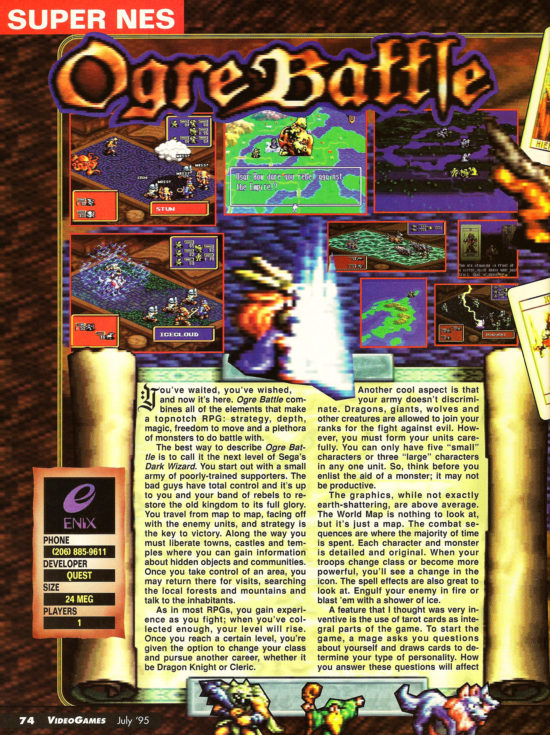
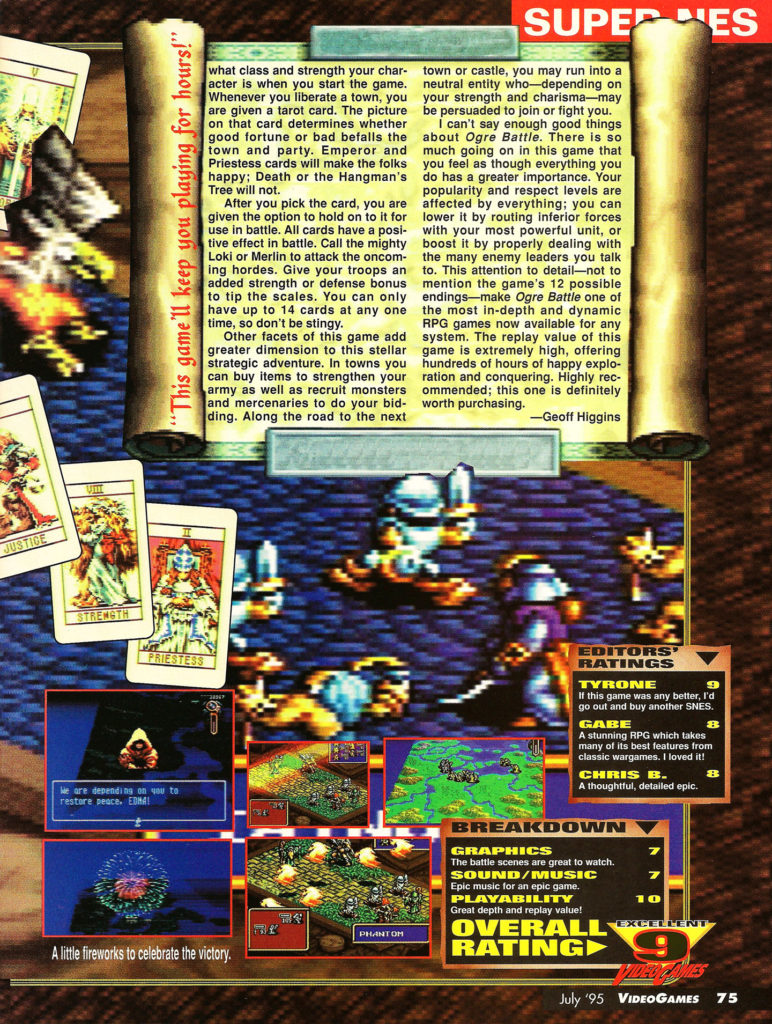
Sega Visions’ review of Phantasy Star II, a very grindy game without much story really, but with some really great twists:
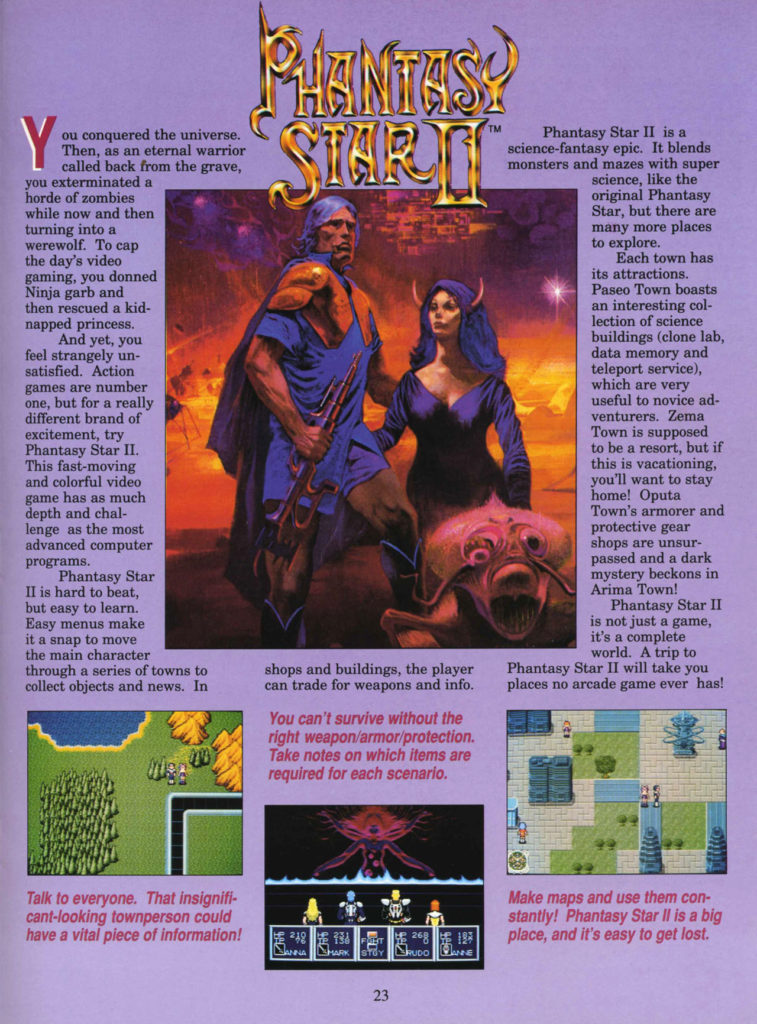
EGM’s review of the remake of Shining Force for GBA:
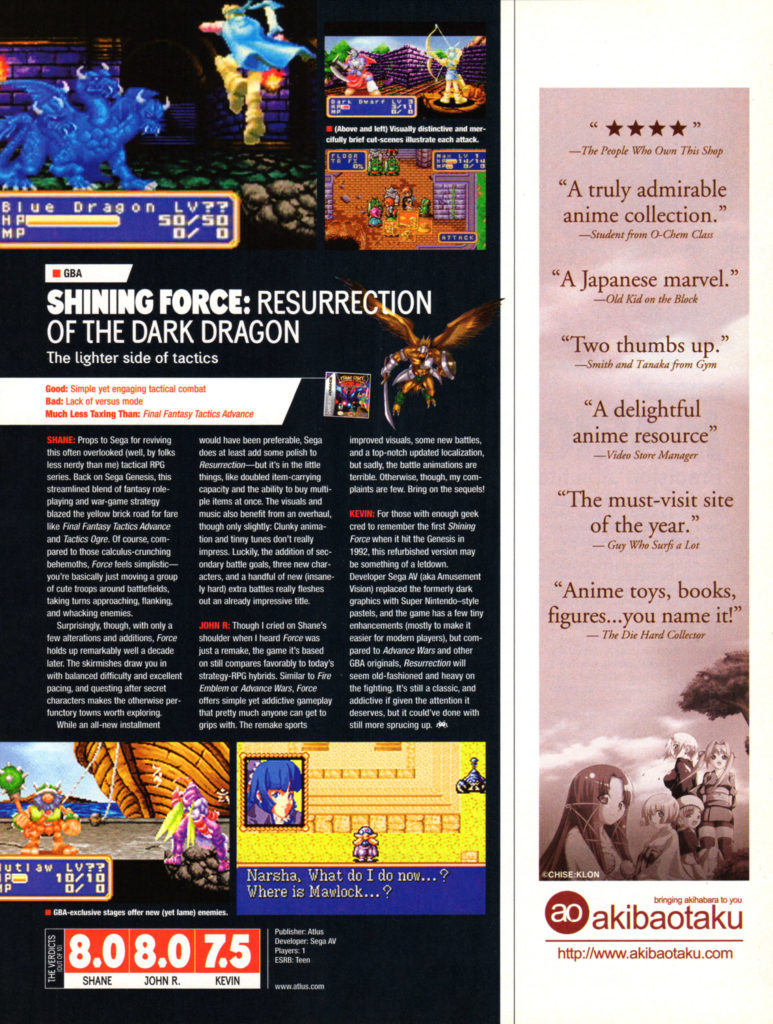
GamePro’s review of Suikoden II didn’t age real well:
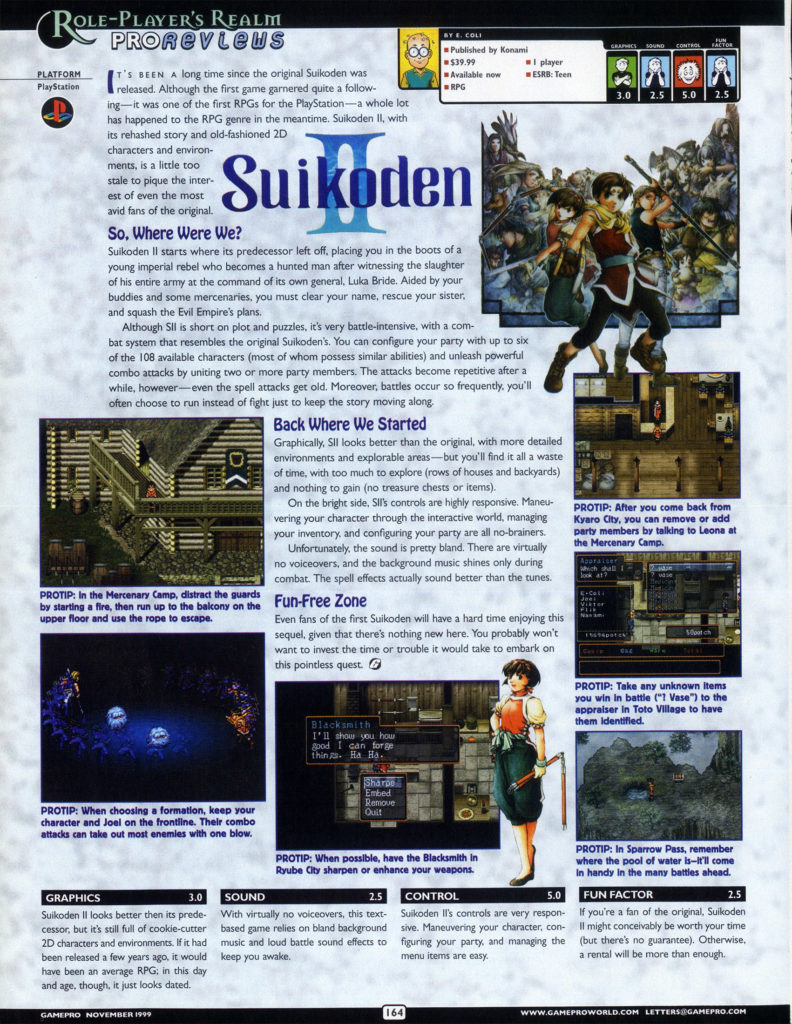
Vay, here mostly to show off the anime character portraits:
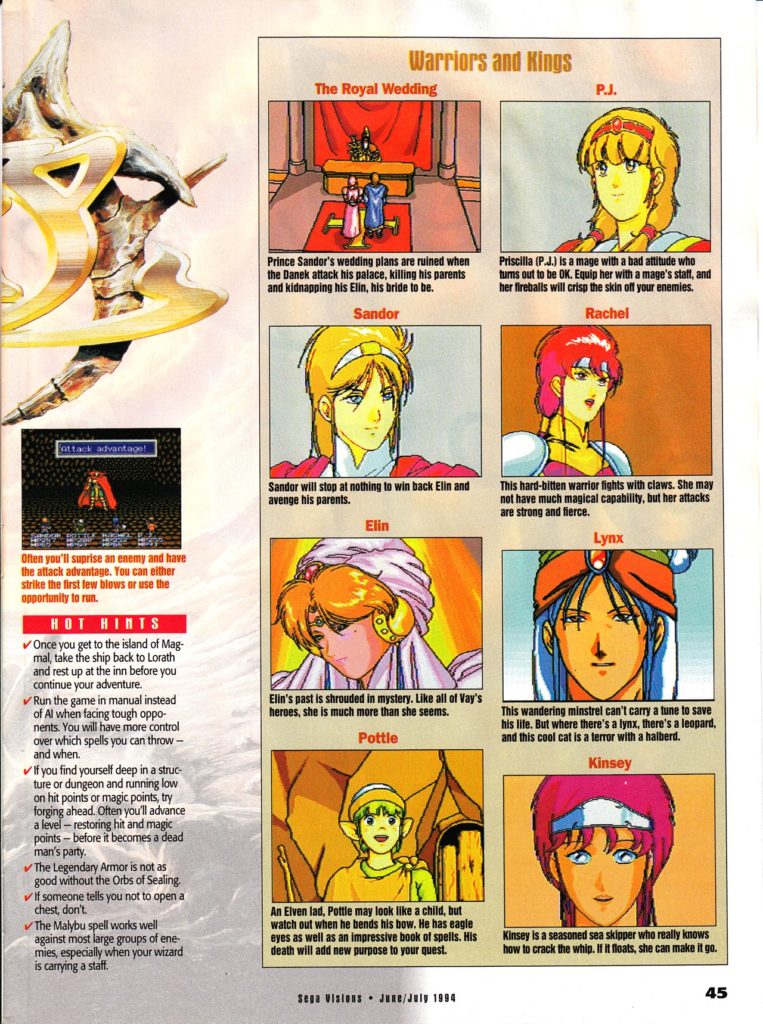
Zelda II in a late review from The Nintendo Official Magazine, with Dr. Mario riding along:
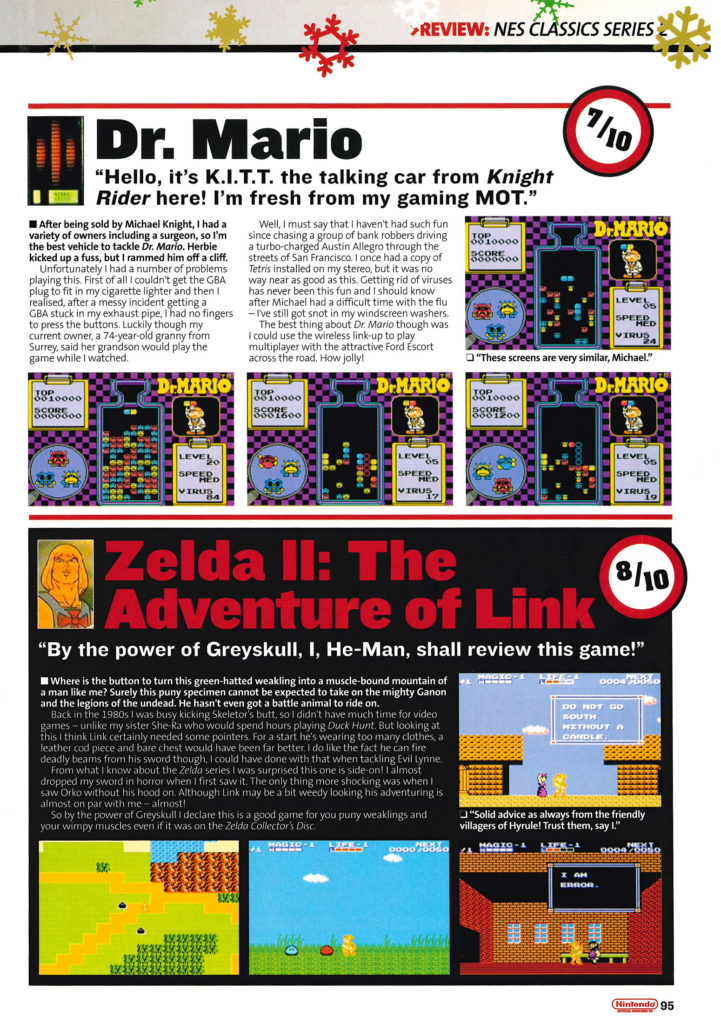
The JRPG Review Archive (spritecell.com)



